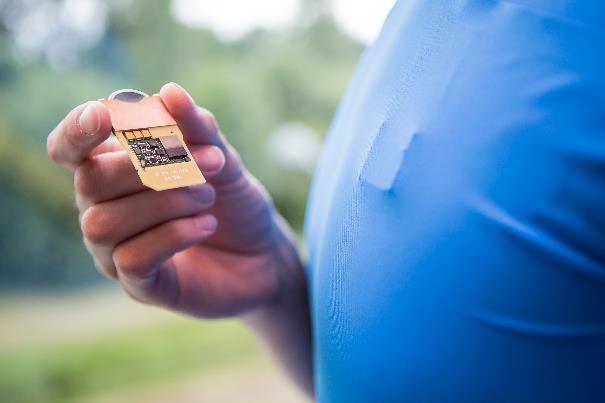If you were at Sensors Expo 2015, it was easy to see that wearable sensors and electronics are hot ticket items and will be for some time to come. Naturally, when a trend is that obvious and potentially lucrative, many a maker will be jumping on the bus and riding with it.
One entity that always has something interesting afoot in the world of sensors is imec and Holst Centre. The organization recently demonstrated what is being called the market’s most advanced smart garment, a smart t-shirt to be exact. Reportedly, this garment keeps users abreast of their physical condition by performing highly accurate electrocardiogram (ECG) measurements on the wearer. It also recognizes activity and calculates energy expenditure while maintaining maximum user comfort and enabling natural movement.

imec and Holst Centre’s smart T shirt provides accurate measurement of physical activities while maintain maximum wearer comfort.
On top of a related megatrend, the shirt is also IoT savvy. It can monitor the wearer’s heart rate, heart-rate variability, activities performed, and calories burned, then send this data over the cloud via a mobile phone, tablet, or PC.
At the heart of this product is imec and Holst Centre’s flexible smart fabric interconnect technology. This is comprised of miniature electronics integrated onto a module measuring about the size of an extended SD card, in the realm of 32 mm x 24 mm x 2.1 mm, and weighing 7g. In addition to a battery, the module hosts imec’s MUSEIC low-power multi-sensor data acquisition chip with embedded processing and a Bluetooth low-energy radio chip. The module can easily be removed to wash the shirt or charge the battery.
Additionally, the patented flexible and stretchable interconnect technology preserves the original properties of the fabric while enabling the liberal placement of sensors, actuators, and electronics. All the processes involved with integrating electronic functionality, i.e., lamination techniques and interconnect technology, are compatible with most standard material production processes and textile manufacturing.
According to Ruben de Francisco, Program Manager Wearable Health Solutions at imec/Holst Centre, “Wearable technology that measures body parameters has become increasingly popular in recent years. Today, on-body sensing is performed using very tight, compression garments. At imec and Holst Centre, we want to extend the functionality of smart garments and deliver medical-grade data through looser, everyday clothes.”
Jeroen van den Brand, Program Manager Integration Technologies for Flexible Systems at Holst Centre/imec adds, “The power consumption of our smart t-shirt has been optimized to achieve long battery autonomy, enabling a wearer to be continuously monitored for the equivalent of three Iron Man races back-to-back. It also offers the perfect platform to integrate additional capabilities such as breathing rate measurements and dehydration monitoring. And we are exploring ways to extend the functionality and to render the garment more communicative, e.g. to feedback the data to wearers. This can be done by integrating simple LED indicators, actuators for haptic feedback or, in the longer term, smart display technologies.”
So it seems like we have a breakthrough in wearables here: accurate measurements paired with comfort. When it comes to style and fashion, you are on your own. For more details, visit http://www2.imec.be/be_en/research/wearable-health-monitoring.html ~MD